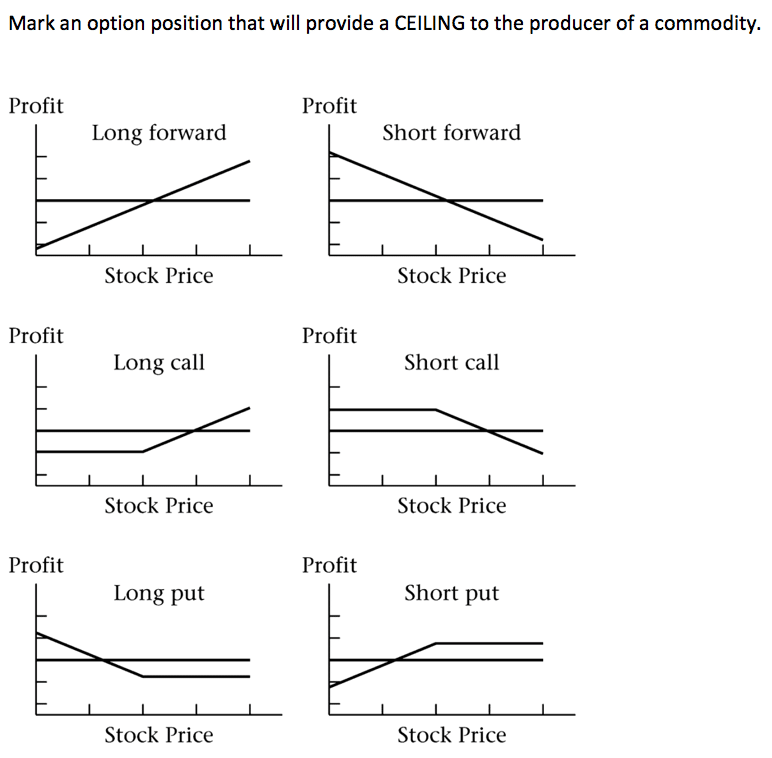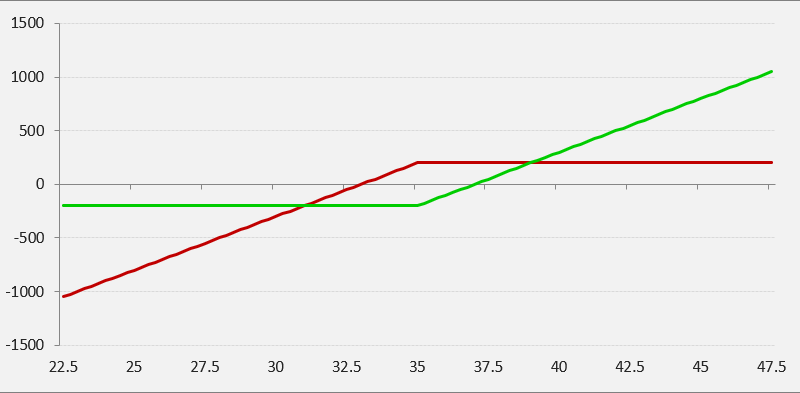Oftentimes newbies option traders are faced with the challenge of choosing the better trading strategy comparing the risks involved and returns. Long call and short call (also known as a naked call) are the common call options trading strategy. So in this article, we are going to be comparing long call vs short call strategies. We will note the differences, similarities, risks, and rewards between the long call and short call.
Firstly we are going to what a call option is all about.
What are Call Options?
A call option is a financial contract that gives the buyer the right, but not the obligation, to buy underlying security (like a stock, futures contract, currency, etc.) at a specific price at any time until the expiration of the contract.
For a buyer, i.e. a long call, you only have the right to buy the appropriate amount of the underlying security if the call option is in-the-money, but you don’t have the obligation.
Likewise, a seller of a call option contract, i.e. a “naked” or short call, always has the obligation to sell the specific amount of the underlying security if the short call option is in the money. Hence we can go ahead to compare the long call vs the short call.
Trading a Call Option
Generally, traders primarily use calls (long call vs short call) for these three reasons: speculation, hedging, and reducing cost-basis.
#1. Speculation
Buying calls, expecting the underlying asset to increase in value before expiration is known as speculation. This is a risky trade because if the underlying asset (like a stock or futures contract) does not rise in value before expiration, the bought call options will expire worthlessly.
Also, traders can sell a call option in assuming that the underlying asset won’t increase before expiration and the call option will expire worthlessly. Option sellers profit on the premium collected.
#2. Hedging
Traders oftentimes buy call options as a hedge against a potential increase in the underlying asset. This is the most common way short-sellers hedge their positions. Essentially, shorting a stock and buying a call is the same as buying a stock and buying a put.
#3. Reducing Cost Basis
Covered calls are actually the most common way traders use call options and reduce their overall cost basis. If a trader has 100 shares of XYZ at $40, for example. He can sell 1 out-of-the-money call option at any strike price contract against his existing long shares. Let’s say he sells a $45 call option for $0.80, he will keep the full $80 in premium unless XYZ is higher than $45.80 at expiration. If XYZ is above $45.80 at expiration, the trade will earn a net profit of $480. So however the market goes, the trader gets to keep the $80 in call option premium.
Short Call vs Long Call Strategy

Short call (Naked call) Strategy
The short-call strategy involves the selling of the call options. In this strategy, the trader goes very bearish in his market view. He expects the price of the underlying asset to go down as soon as possible. This is highly risky with potential limitless losses but it’s more desirable to seasoned traders.
It involves taking a single position of selling a Call Option of any type. They are also known as out-of-the-money naked calls and In-The-Money naked calls based on the type you choose. This strategy has a limit to the rewards and limitless loss potential.
Long Call Strategy
This call option trading strategy is one of the basic strategies. Here the trader has a bullish market view and expects the market to rise in the nearest future. This strategy involves taking a single position of buying a Call option. It has a limit to the risks and limitless profit potential.
The trader buys a call option and goes long on a call to sell it at a later date to make profits if the price of the underlying asset rises. When buys the call, he pays the premium in exchange for the right to buy a share or index at specific expiry date.
Consequently, in comparing short-call strategy vs long-call strategy we can see some similarities and differences too. Both call options maintain one position. The difference in the short call vs long call strategies is that while the short call market view is bearish, that of the long call is bullish.
Read also: SHORT PUT OPTION: Overview, Examples (+ trading tips)
Long Call vs Short Call Usage
Long Call
The long call option strategy works well when you expect the underlying instrument to move positively in the near future.
For instance, if you want company ABC to do well soon, then you can buy the Call Options of the company. Hence, you will earn the profit if the price of the company closes above the Strike Price on the date of expiration. On the other hand, if the underlying shares don’t do well and move downwards on the expiry date you’ll eventually incur losses, losing the premium paid.
Short Call (Naked Call)
This is an aggressive strategy and involves huge risks. You only use it in the case where the trader is certain about the bearish market view on the underlying.
From here we can see another difference in the long vs short call usage. The long call here requires buying call option only whereas the short call requires the sell call option.
Also, the break-even point for the long call strategy is the sum of the strike price and the premium paid while that of the short call is the strike price plus the premium received.
Long Call vs Short Call Risks
Long Call
The risks here are limited to the premium paid for the option irrespective of the price of the underlying expiration date. Hence the maximum loss is equal to the premium paid.
Besides, there is no maximum profit attainable. In other words, the trade gets profitable when the price of the underlying instrument is greater than the strike price plus the premium.
Consequently, for the maximum profit scenario, the underlying closes above the strike price on expiry. On the other hand, the underlying closes below the strike price on expiry for the maximum loss scenario.
Short Call
Here, the risks are unlimited depending on how high the price of the underlying moves. Also, the rewards are limited to the premium received.
So in the maximum price scenario, the underlying asset goes down and the option is not exercised. Consequently, the maximum profit is equal to the premium received and it is achieved when the price of the underlying instrument is less than or equal to the strike price of the short call.
For the maximum loss scenario, it’s when the underlying instrument goes up and the option is exercised. This implies that the maximum loss is unlimited. The loss occurs when the price of the underlying is greater than the strike price of the short call plus the premium received. Hence the loss is equal to the price of the underlying minus the strike price of the short call and the premium received.
Pros and Cons of the Long Call vs Short Call
Long call
The major advantage of the buying a call option (long call) instead of the underlying is that it allows you to gain more profits by investing less and limiting your losses to the minimum.
The cons here is that call options lifespan has limits. So if the price of the underlying stock is not higher than the strike price before the expiry date, the option will expire worthlessly. Consequently, you’ll lose the premium paid.
Short Call
The advantage here is that the strategy allows you to profit from falling prices in the underlying asset.
Conversely, the disadvantage is that there is an unlimited risk on the upside if you are selling the option without holding the underlying. Hence, the rewards are limited to the premium received only.
Is the Profit/Loss for a Short Call and a Long Call the Same?
Certainly not. Long call option positions always entail a known risk and an unknown profit.
A long call’s total risk is always equal to the initial premium paid. For example, if a stock ABC is selling at $50 and you purchase one call option with a strike price of $54 for $0.40, the total maximum loss for this position is $40.00 (1 option = 100 shares, $0.40 x 100 = $40).
Because stocks can theoretically continue indefinitely, the maximum profit for long calls is infinite.
However, while the maximum profit for a long call is unlimited, so is the maximum loss for a short call.
When selling call options, the most significant risk is the prospect of a considerable loss. A short call’s maximum profit is always equal to the premium earned for placing the trade.
How do short call and long call options impact an investor’s portfolio?
Short call and long call options can impact an investor’s portfolio in different ways. A short call option can generate income but also carries unlimited risk, whereas a long call option has limited risk but also limited potential reward.
What happens when an investor holds a long call option that expires worthless?
When an investor holds a long call option that expires worthless, the option will have no value and the investor will lose the premium paid for the option. This is known as an “out of the money” option.
How does the price of the underlying asset affect a short call option?
The price of the underlying asset has a significant impact on the value of a short call option. If the price of the underlying asset increases, the value of the short call option will decrease, and the investor may have to buy the underlying asset at a higher price to cover the short call position.
Can a long call option be used in combination with other investment strategies?
Yes, a long call option can be used in combination with other investment strategies, such as a covered call or a bull call spread.
Can a short call option be used in combination with other investment strategies?
Yes, a short call option can be used in combination with other investment strategies, such as a bear call spread or a short straddle.
When is it appropriate to use a long call option?
It is appropriate to use a long call option when an investor expects the price of the underlying asset to increase. A long call option allows the investor to profit from an increase in the price of the underlying asset without having to own the underlying asset.
How does an investor benefit from a long call option?
An investor can benefit from a long call option by profiting from an increase in the price of the underlying asset. If the price of the underlying asset increases, the value of the long call option will also increase, and the investor can sell the option for a profit. Additionally, the investor has limited risk as the maximum loss is equal to the premium paid for the option.
Summary
Here we can see that long call and short call are both great strategies to use when an investor expects the price of an underlying stock to move either up or down. Comparing the long call vs short call we can see that both have their risks and rewards. Having gone through this article, investors should feel prepared to begin buying and selling call options.
Short Call vs Long Call FAQs
What is the difference between long call and short call?
Buying or holding a call or put option is a long position in options; the investor holds the right to buy or sell to the writing investor at a specified price. Selling or writing a call or put option, on the other hand, is a short position; the writer must sell to or buy from the option’s long position holder or buyer.
What happens when a short call expires?
The call option buyer profits if the amount gained by selling the shares is greater than the price paid for the call option. A short call expiring in the money will result in an assignment and, eventually, a short stock position.
How long do short calls last?
There are no hard and fast regulations about how long a short sale can last before being terminated. The lender of the shorted shares can request that the investor return the shares at any moment, with little warning, but this rarely occurs in practice as long as the short seller continues to pay their margin interest.
What is a poor man's covered call?
A “Poor Man’s Covered Call” is a Long Call Diagonal Debit Spread that mimics a Covered Call position. The strategy’s name derives from the lower risk and capital required compared to a normally covered call.






